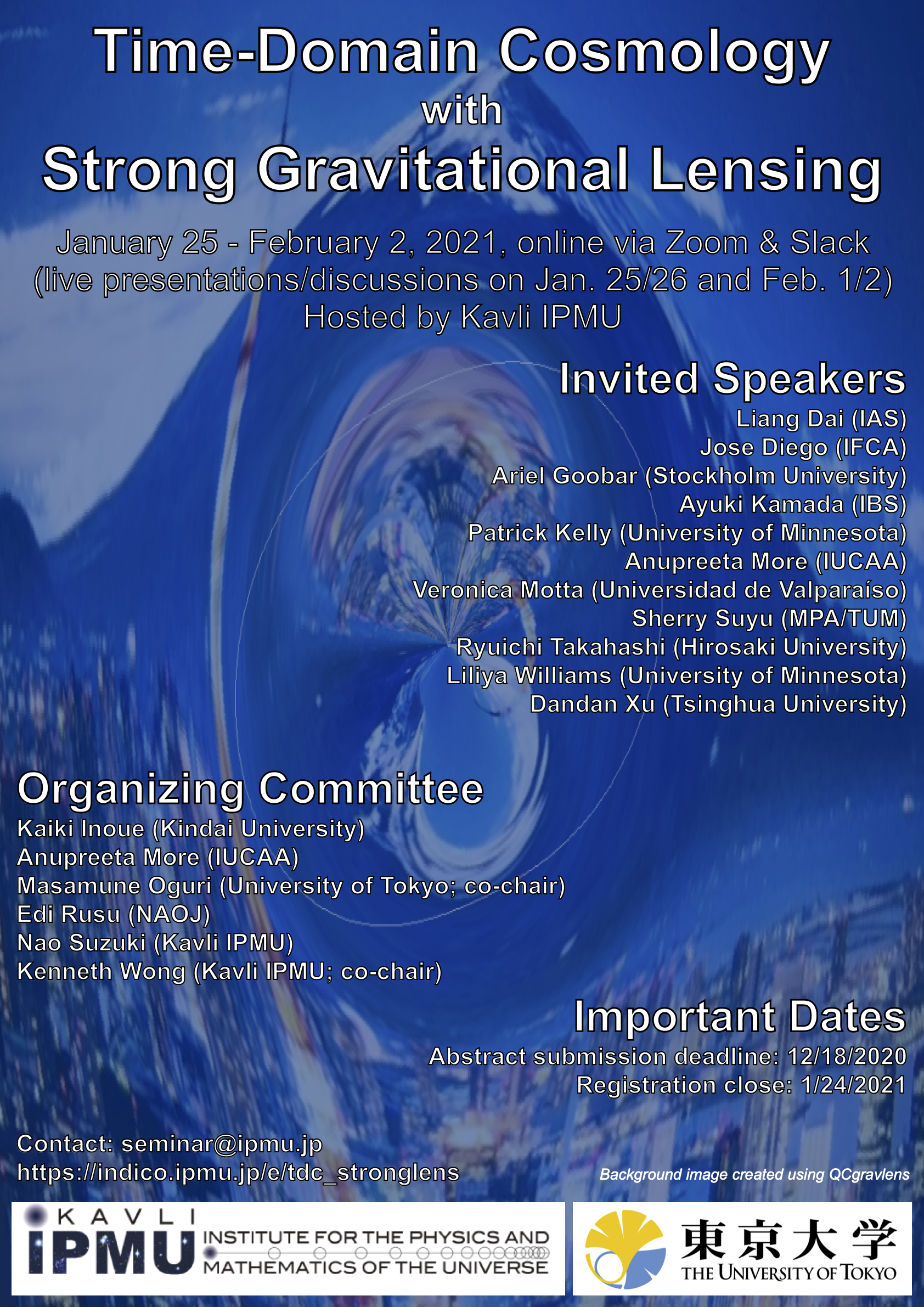Time-Domain Cosmology with Strong Gravitational Lensing
Online via Zoom & Slack
Dates: January 25 - February 2, 2021 (live presentations/discussions on Jan. 25/26 and Feb. 1/2 from 13:00-15:00 UTC)
Venue: online via Zoom & Slack
Abstract submission deadline: December 18, 2020
Registration deadline: January 24, 2021
Overview
This workshop will focus on applications of strong gravitational lensing to do cosmology, particularly with time-domain observations. This would include time-delay lensed quasars to determine the Hubble constant, lensed supernovae from future surveys, microlensing to detect dark compact objects, the effects of substructure lensing, and lensed gravitational waves, among other topics.
Invited speakers
- Liang Dai (IAS)
- Jose Diego (IFCA)
- Ariel Goobar (Stockholm University)
- Ayuki Kamada (IBS)
- Patrick Kelly (University of Minnesota)
- Anupreeta More (IUCAA)
- Veronica Motta (Universidad de Valparaíso)
- Sherry Suyu (MPA/TUM)
- Ryuichi Takahashi (Hirosaki University)
- Liliya Williams (University of Minnesota)
- Dandan Xu (Tsinghua University)
Organizing committee
- Kaiki Inoue (Kindai University)
- Anupreeta More (IUCAA)
- Masamune Oguri (University of Tokyo; co-chair)
- Edi Rusu (NAOJ)
- Nao Suzuki (Kavli IPMU)
- Kenneth Wong (Kavli IPMU; co-chair)
Address:
Kavli Institute for the Physics and Mathematics of the Universe (Kavli IPMU),
The University of Tokyo, 5-1-5 Kashiwa-no-ha, Kashiwa City, Chiba 277-8583, Japan

